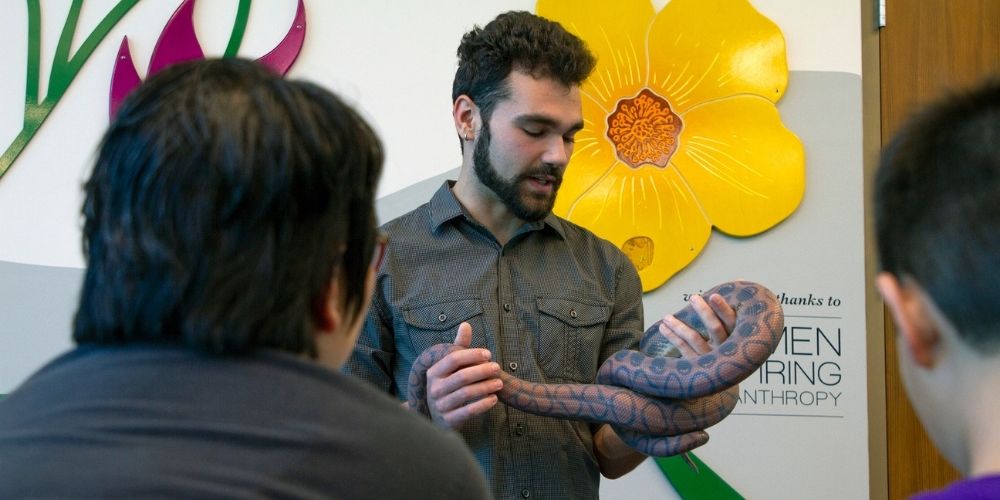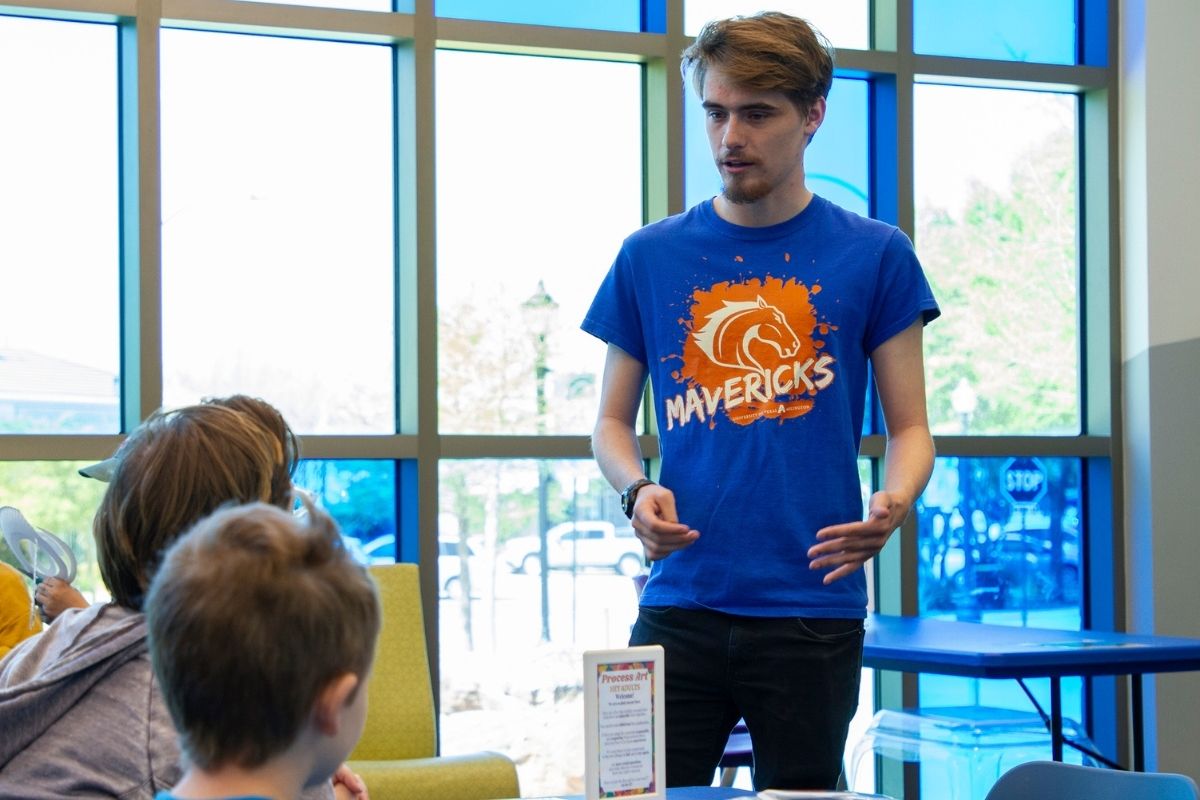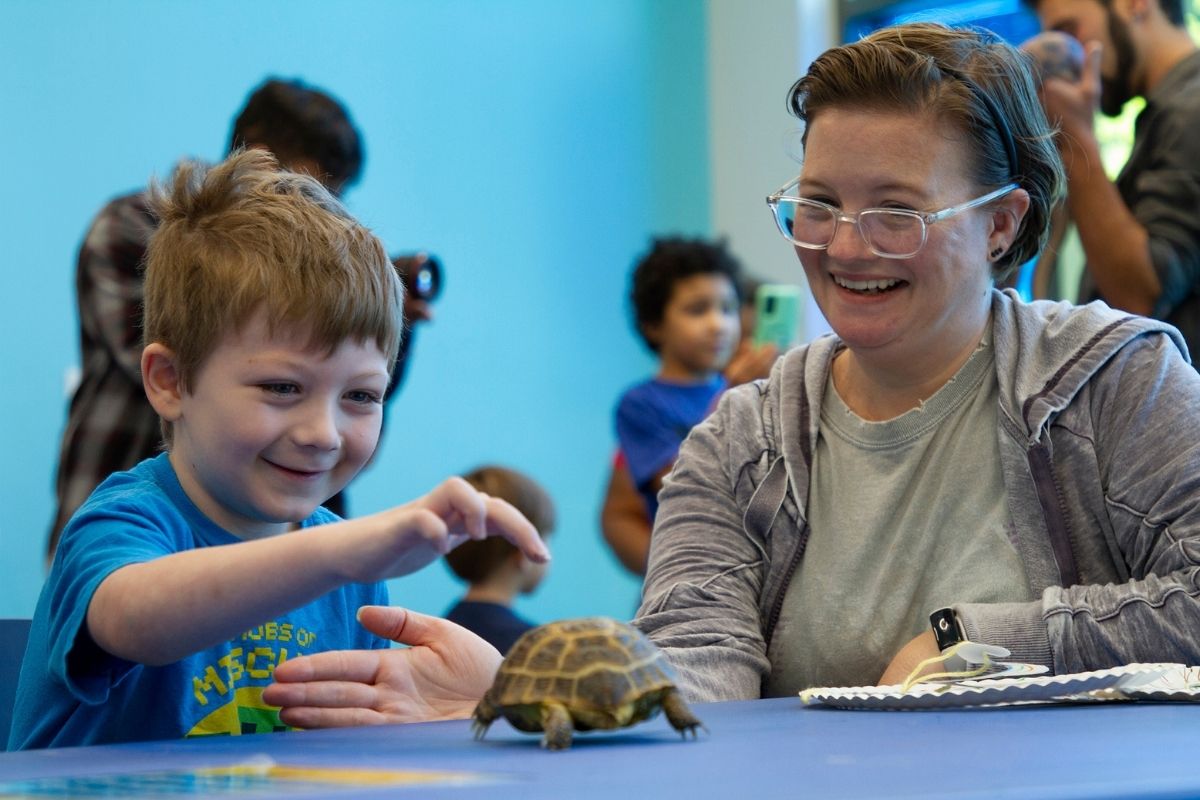Life Sciences Building, Room 206
501 S. Nedderman Drive
Box 19047
Arlington, TX 76019
Boa snakes, horned lizards and lasting lessons

On a sunny morning at the Arlington Public Library, a Brazilian rainbow boa wrapped itself around Greg Pandelis’ arms. The muscular snake, its eyes cloudy from shedding, stayed close as a classroom of attentive children watched.
Pandelis, curator of the Amphibian and Reptile Diversity Research Center (ARDRC) at The University of Texas at Arlington, was in the middle of an interactive presentation for elementary and middle school-aged students hosted by the library’s downtown branch.
“Due to fear or unfamiliarity, snakes and lizards are often overlooked in our landscapes, but they fill important roles in our ecosystems,” Pandelis said. “They are alluring creatures with an interesting natural history.”
When he was the same age as the young students in the room, Pandelis became interested in zoology. Hoping to inspire his audience, he described many adolescent backyard and wilderness adventures when he would observe the natural world and its inhabitants.

At the front of the classroom, he lifted a heavy glass jar onto a table. After unscrewing its lid, he dipped his hand into the ethanol inside and pulled out the preserved body of a Texas horned lizard.
A parent asked, “Don’t those shoot liquid from their eyes?”
“Yes,” Pandelis answered. “In fact, they shoot blood from their eyes to scare away predators.”
As Pandelis confirmed and dispelled myths about various creatures, Dalton Lawing, undergraduate biology student and president of UTA’s Herpetology Club, carefully allowed each student to closely inspect the preserved lizards and snakes.
Home to more than 200,000 specimens, the ARDRC is one of the most comprehensive herpetological collections on earth and the largest in Texas. In the research center, rows of metal shelving hold jar after jar of floating reptiles and amphibians, carefully preserved for examination by researchers who travel to campus from around the world.

Marla Boswell, children’s librarian at Arlington Public Library, said the ARDRC’s educational outreach offers a unique learning opportunity.
“The students are receiving expert teaching and access to rare materials in an intimate learning environment,” Boswell said. “They are memorable experiences that imprint lasting lessons.”
Lawing, who will travel to Puerto Rico this summer to conduct field research on anole lizards, hopes exposure to amphibians and reptiles will help people develop respect for their contributions to environmental and biological processes.
“The ARDRC is an incredible educational resource, but many people don’t know about it because they aren’t research scientists,” Lawing said. “When we bring live animals and specimens into the public, we hope to educate children and adults about how these species benefit their daily lives.”
--
The UTA College of Science, a Texas Tier One and Carnegie R1 research institution, is preparing the next generation of leaders in science through innovative education and hands-on research and offers programs in Biology, Chemistry & Biochemistry, Data Science, Earth & Environmental Sciences, Health Professions, Mathematics, Physics and Psychology. To support educational and research efforts visit the giving page, or if you're a prospective student interested in beginning your #MaverickScience journey visit our future students page.